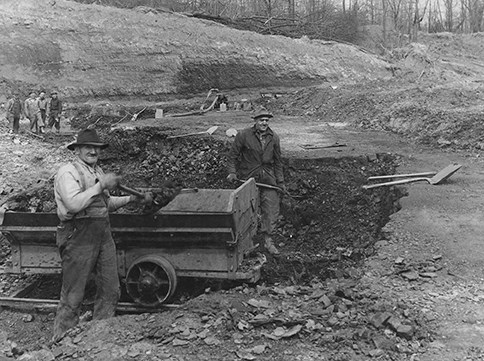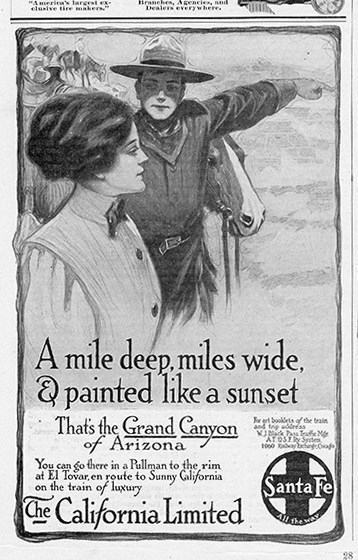Last updated: November 22, 2021
Article
History of the Valley Railway

© Rick McMeechan
The sound of a train whistle can elicit a smile, excitement, and memories. Can you feel the train’s sway, smell the belching smoke, and recall stories of adventure? Since the 1830s rail travel has shaped the sights, sounds, and experiences of the nation. In 1880 Valley Railway Company brought railroading to the Cuyahoga Valley, forever changing the area and those who called it home. Memories continue to be built everyday as passengers climb aboard Cuyahoga Valley Scenic Railroad to experience historic rail travel through Cuyahoga Valley National Park.

Courtesy / Ohio History Connection
Bringing Ohio Resources to Market
“The Valley Railway Company presents to the consideration of capitalists the most direct practical line of railway from vast mineral deposits of Ohio to the greatest distributing lake port.” Prospectus of the Valley Railway Company, 1874
The Valley Railway was founded in the late 1860s by entrepreneurs from Cleveland, Akron, and Canton. Their goal was to establish a railway that would transport the rich mineral, natural, and agricultural resources of Ohio to the industries and lake port of Cleveland. Geologist MC Read evaluated the natural resources accessible by the railway: “The mineral resources of your road are not excelled by any other in the State... [T]he counties traversed are among the leading agricultural ones of the State...” The railroad carried coal, stone, iron, copper, sand, lime, ore, agricultural products, and livestock north to Cleveland. Railroad promoters valued the downhill grade from Akron to Cleveland and wide curves of the track, which allowed more tonnage to be carried north.

NPS Collection
The Valley Railway encouraged the growth and creation of business. The village of Boston boasted the Cleveland- Akron Bag Company; Jaite was home to the Jaite Paper Mill. Spur lines connected the railway with stone quarries such as Lawson Waterman’s in Peninsula. The increased speed of transportation also benefited agriculture. Farmers could ship produce and it would still be fresh upon arrival at market. For example, dairy could be shipped as milk rather than processed cheese.
Traveling by Rail
Railroad planners believed that railcars would travel northbound with bulk resources and return southbound with passengers. Within the Cuyahoga Valley, passengers awaited trains at depots in Independence, Brecksville, Boston, Peninsula, Everett, Ira, and Botzum. These simple buildings became hubs of activity. Telegraph service and mail delivery brought individuals together for the latest news and gossip, local and national.
Valley Railway Through Time
Consolidation and corporate change are a constant with freight railroads. The Valley Railway was no different.
- 1880 Valley Railway service begins.
- 1890 Baltimore & Ohio Railroad acquires a controlling interest.
- 1895 Valley Railway declares bankruptcy and reorganizes to become the Cleveland Terminal & Valley Railroad under the control of Baltimore & Ohio Railroad.
- 1915 Baltimore & Ohio Railroad purchases Valley Railway.
- 1962 Chesapeake & Ohio Railroad purchases Baltimore & Ohio Railroad.
- 1974 Cuyahoga Valley National Park is established.
- 1975 Cuyahoga Valley Line begins operation of a tourist train through the park.
- 1980 Chesapeake & Ohio Railroad becomes CSX Transportation Corporation.
- 1985 CSX abandons 26 miles of rail line through the park.
- 1987 National Park Service purchases the abandoned track.
- 1988 Cuyahoga Valley Line resumes train excursions through the park.
- 1994 Cuyahoga Valley Line is reorganized as Cuyahoga Valley Scenic Railroad.

NPS Collection / Harpers Ferry Center
Tourism, Trains, and National Parks
Long before Cuyahoga Valley became a national park, people recognized its scenic and recreational values. The Guide Book for the Tourist and Traveler over the Valley Railway! by John Reese, published in 1880, highlighted these values. The book focused on the natural landscape, historic structures, and recreational potential of the valley. It described places such as Alexander’s Grist Mill, a cheese factory in Brecksville, the Peninsula Mills, and the Cuyahoga River.
Referring to the Brecksville area, Reese noted, “This is the most beautiful and striking spot along the line of the road and must be seen to be appreciated … This might be called the Eden of the Cuyahoga Valley, for how much pleasanter a place would our first parents have wanted than this?”
The railroad industry promoted tourism in the Cuyahoga Valley and across the nation, encouraging passengers to climb aboard their trains in search of romance, adventure, and scenic beauty. Railroad companies worked in conjunction with park advocates to create many of America’s national parks. Profit motivated, they set out to bring paying customers to Yellowstone, Yosemite, Glacier, Grand Canyon, and numerous other scenic destinations.
As the famous 19th-century conservationist John Muir noted, “Even the soulless Southern Pacific Railroad Company, never counted on for anything good, helped nobly in pushing the bill for [Yosemite] park through Congress.”
Today, that type of partnership continues here at Cuyahoga Valley National Park. The National Park Service owns and maintains the train track, and the not-for-profit Cuyahoga Valley Scenic Railroad owns, maintains, and operates the rolling stock. Together, they ensure that passengers can enjoy the valley’s beauty while experiencing the romance of vintage rail travel.
Leaving Your Car Behind
“If the National Parks are to survive the pavement, congestion, and pollution that the automobile leaves in its wake, a better way of transporting visitors must be found.” Historian Alfred Runte, 1990
National parks are more popular than ever, but automobile traffic takes its toll. Many parks are working to develop alternative transportation systems. For example, you can ride a Red Bus in Glacier National Park, take a ferry to Gulf Islands National Seashore, and climb aboard a train in Cuyahoga Valley National Park. Along your route you can limit your impact on the environment, explore America’s heritage, and build life-long memories.
For information on Cuyahoga Valley Scenic Railroad excursions and programs, call 800-468-4070 or visit their website.
It’s not the destination, it’s the journey.
